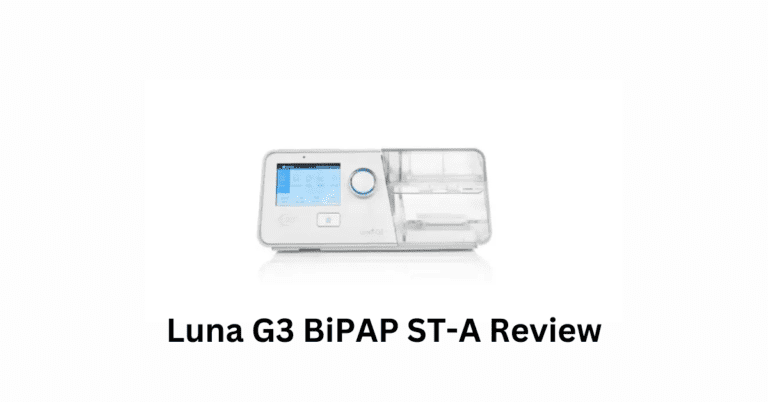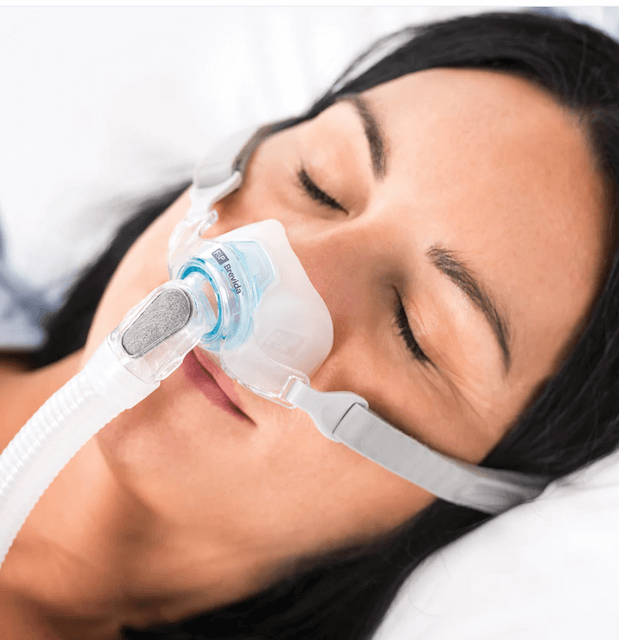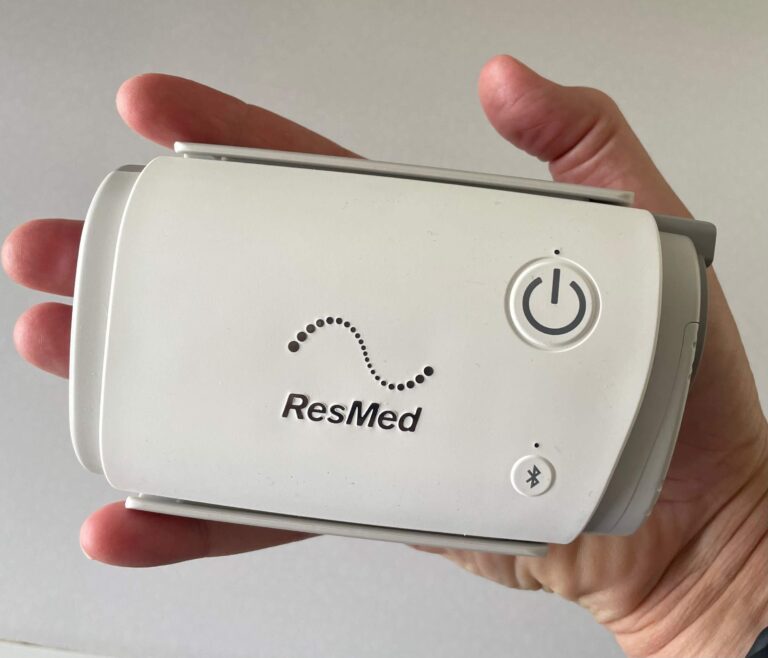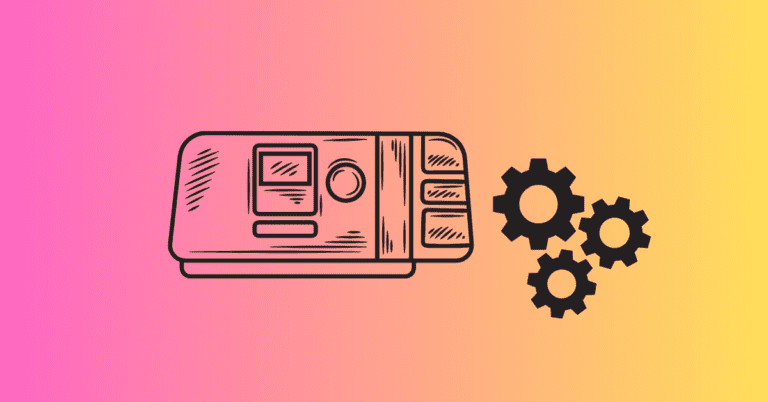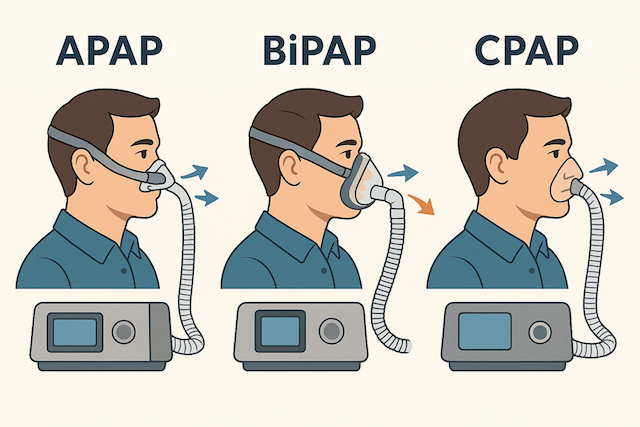ResMed AirSense 10 AutoSet Review: This Machine Saved My Life
Jeremy Smith is a long-term CPAP user and sleep apnea advocate. After being diagnosed with severe obstructive sleep apnea, he created ByJeremySmith.com to help others navigate CPAP therapy through personal stories, gear reviews, and practical advice.
“This post contains affiliate links. I may earn a commission if you buy through these links, at no extra cost to you. Read my Disclaimer for more details.”
Welcome to my ResMed AirSense 10 AutoSet Review.
In this review, I’ll be looking at the ResMed AirCurve 10 ASV, which is my machine, so I’ll try not to be too biased!
I’ve found it to be an excellent workhorse for me over the years when it comes to managing my severe obstructive sleep apnea.
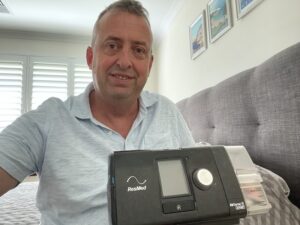
To be honest, I’m now considering upgrading to the more modern ResMed AirCurve 11, but the 10 has some advantages, which I’ll cover below.
In this comprehensive review, I’ll dive into its standout features, user experience, pros and cons, and why it’s one of the best CPAP machines available today.
My AHI (that’s how many times you stop breathing per hour) was over 50, which put me firmly in the severe range. I woke up most days with a pounding headache, my energy was nonexistent, and my wife said I sounded like a chainsaw at night.
Key Features of the ResMed AirCurve 10 Autoset
1. AutoSet Technology
This is what makes the AirSense 10 so smart. The machine tracks every breath, detects airway collapses, and automatically increases pressure until your airway opens up. When my breathing stabilizes, it reduces pressure to keep things comfortable. It’s like having a sleep tech watching over me every night.
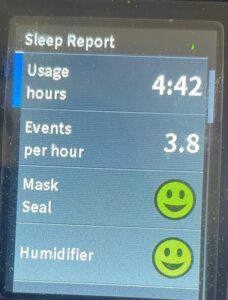
When I first used mine, I was amazed that it could reduce my AHI (Events per hour) from 58 to 3.8 and lower.
My headaches and migraines went overnight.
2. Built-in Humidifier
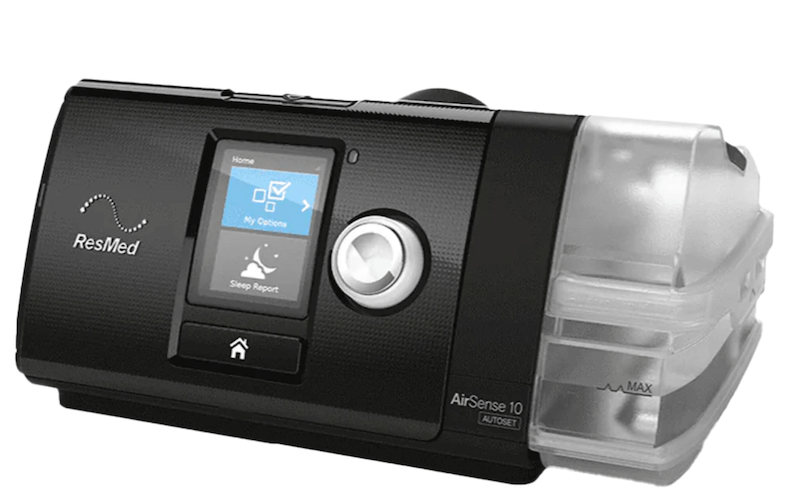
CPAP air can be dry and harsh, especially in winter. That’s why the AirSense 10 has an integrated HumidAir™ humidifier that keeps air comfortable and moist. So there’s no need for a bulky external humidifier—it’s all built-in.
3. EPR (Expiratory Pressure Relief)
Exhaling against CPAP pressure can feel unnatural at first. EPR (Expiratory Pressure Relief) reduces the pressure slightly when I breathe out, making the whole process feel much more natural.
4. MyAir App Data Tracking
The MyAir app lets me see a full breakdown of my night’s sleep every morning. I can check:
- Total usage hours
- Apnea events per hour (AHI)
- Mask seal quality
- My personal sleep score out of 100
To be honest, I don’t look at this data much because my general well-being these days is so good that I know it’s just working. Also, a quick click of the sleep report in the morning shown above tells me how I’m tracking.
5. Whisper-Quiet Operation
At just 27 decibels, the AirSense 10 is whisper-quiet. My wife (who’s a light sleeper) barely notices it running.
What is the ResMed AirSense 10 AutoSet?
The ResMed AirSense 10 AutoSet is a premium automatic CPAP machine (APAP). What makes it “AutoSet” is the pressure adjustment technology that automatically changes airflow based on how well you’re breathing.
Setup and Ease of Use
Setting up the AirSense 10 was shockingly simple. Out of the box, the machine includes:
- The device itself
- Power supply
- Heated tubing (optional but highly recommended)
- Water chamber for humidification
- A starter filter
I had everything ready to go in under 15 minutes. The color LCD screen and turn-and-press dial make navigating the menu super easy. I didn’t need to read a thick manual—everything is intuitive.
Real-World Performance: My Experience After Years of Use
Let me paint you a picture of my life before CPAP therapy:
- Frequent morning headaches.
- Severe migraines that would take most of the day to go away.
- Falling asleep at work.
- Gaining weight despite trying to exercise.
- I’ve woken up gasping for air several times a night.
- Zero energy.
Within the first week on the AirSense 10, my world changed. My headaches disappeared, my wife noticed my snoring improved (almost instantly), and I woke up feeling fully rested for the first time in years.
Five years later, I still use my ResMed AirSense 10 every night. It’s reliable, quiet, and comfortable. I travel with it, rely on it, and trust it with my health.
Pros and Cons: The Honest Breakdown
Pros
✅ Automatic pressure makes therapy comfortable
✅ Built-in humidifier prevents dryness
✅ EPR makes breathing feel natural
✅ Whisper-quiet for bed partners
✅ Fantastic data tracking via MyAir
✅ Works with any mask (nasal, full face, pillows)
Cons
❌ Slightly bulky for travel
❌ No built-in battery (requires external one for camping)
❌ AirSense 11 is more modern and offers a sleeker design
How It Compares to the ResMed AirSense 11
Since the AirSense 11 came out, people often ask me if they should upgrade. Honestly? Unless you love touchscreens or want the latest software, the AirSense 10 still holds its own.
Both use the same AutoSet algorithm, both are whisper-quiet, and both track data through MyAir.
Who Should Buy the AirSense 10 AutoSet?
Perfect For:
✅ New CPAP users who want something easy to set up
✅ Long-term users upgrading from older machines
✅ Anyone who wants reliable auto-adjusting pressure
✅ People who value comfort and quietness
Who Might Prefer a Different Machine?
Skip It If:
❌ You want the absolute smallest travel CPAP (check out the ResMed AirMini Review instead). I have both machines.
❌ You need a built-in battery (look at battery-compatible travel machines)
❌ You want the newest model no matter what (then AirSense 11 might appeal more)
Final Verdict: My Personal Recommendation
I use the ResMed AirSense 10 AutoSet every night, and the only reason I am upgrading to the ResMed Autosense 11 is that I blog about CPAP.
The 10 is comfortable, reliable, easy to clean, and smart enough to handle my fluctuating apnea without me constantly fiddling with settings.
If you’re serious about treating sleep apnea and want a machine that can genuinely improve your health, this is my top pick.
💡 Pro Tip: If you are shopping online, I recommend Sleep Doctor
Click here to read my Best CPAP Machines roundup.
Thanks for checking out my ResMed AirSense 10 AutoSet Review
Frequently Asked Questions
Is the AirSense 10 still worth buying in 2025?
Absolutely! It’s proven, reliable, and slightly cheaper than the newer AirSense 11. If you like physical buttons over touchscreens, you might even prefer it.
What’s the difference between the AutoSet and standard AirSense 10?
The AutoSet adjusts pressure automatically, while the standard model uses a fixed pressure. If you want the most comfort and flexibility, AutoSet is the way to go.
Can I use any mask with the AirSense 10?
Yes! This machine works with all major CPAP masks—nasal, full-face, and pillow masks.
Disclaimer: The content on this blog is for informational and educational purposes only and is not a substitute for professional medical advice. Always speak with your doctor or sleep specialist before starting, stopping, or changing any treatment or therapy related to sleep apnea or CPAP use.
